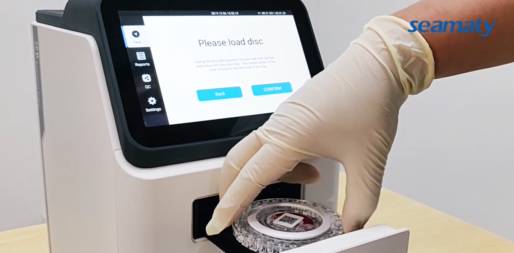Among the assay measurements for biochemical analysis, enzyme determination is more complex. It requires higher conditions and is more difficult to test. Generally, as long as the determination of enzymes is accurate and reproducible, the determination of other items in fully automatic biochemical analyzers is generally not a problem.
The common reasons for inaccuracy and poor repeatability in the enzyme analysis of automatic biochemistry analyzer are analyzed for the reference of users and maintenance engineers.
The principle of enzyme determination of automatic biochemical analyzer
The determination of enzymes in automatic biochemistry analyzer is generally tested by kinetic method. The principle is to use the physical, chemical or enzymatic reaction analysis method under the optimum conditions of enzyme reaction. In the reaction rate constant period (zero level reaction period) to continuously observe and record the changes in the amount of substrate or product within a certain reaction time. The magnitude of the enzyme activity and the concentration of metabolites are calculated using the initial rate of enzyme reaction per unit time.
The results of the enzyme test are related to the following points.
(1) 340nm is the low end of wavelength and has lower energy.
At the same time, 340nm filter is more used and easy to be aged. Therefore, the wavelength drift is not allowed, and the half-width change will affect the accuracy and repeatability of the measurement.
(2) dynamic method of testing has a delay time, test time requirements.
Delay time in the dynamic method for the pre-response time. Test time in the dynamic method for the total time of the test. The zero-level kinetic method is for a specific time period. The reaction is more complex when the enzyme reaction is first initiated. It is more heterogeneous reaction. Therefore a delay period must pass before the reaction can enter a stable reaction period. The reagent vendors have strict rules for these two time periods. So the dynamic method test generally temperature at 37 ℃, the delay time is not less than 15s is good.
(3) For the input of parameters, the given values should be entered according to the requirements of reagents. Generally reagent vendors give instructions in the kit manual.
(4) The reaction temperature.
(5) The test blank should be accurate.
(6) The size of the aspirate volume directly affects the cross-contamination and the reproducibility of the measurement. It is recommended that the amount of reagent for testing contaminating substances should be increased accordingly. Generally should be > 400μl, the general project is 500μl can be.
(7) test inaccuracy and poor reproducibility from the operation of the main
a. automatic biochemical analyzer itself causes such as bubbles in the colorimetric cup.
b. Aging of the light source lamp.
c. Unstable voltage of the light source.
d. poor performance of the 340nm filter, transmittance becomes smaller.
e. inaccurate wavelength and other related.
Generally check whether the liquid interface is loose and leaky, replace the light source bulb and 340nm filter can be solved. As for the circuit problem, the heating element is damaged and the temperature is not controlled, the problem can only be solved by engineers.
In conclusion, there are many factors that affect the accuracy of enzyme determination. As long as we operate carefully, analyze all the factors affecting the determination and analyze them carefully, the problem of enzyme determination is not difficult to solve. According to our experience, as long as the reagents and samples are accurate, properly preserved, samples are carefully pretreated, the automatic biochemical analyzer is often maintained and serviced, and operated carefully, these problems will be solved by themselves.


